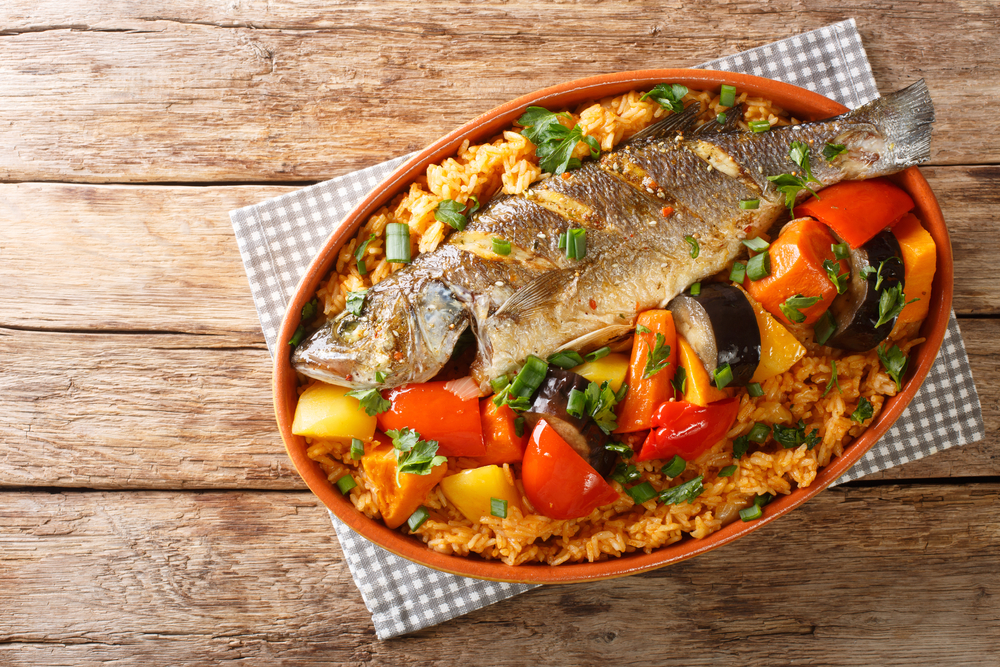Savoring the Flavors of Senegal
Thieboudienne (often pronounced as “cheb-o-jin”), also known as Ceebu Jën, is a classic West African dish, particularly celebrated as the national dish of Senegal. A delightful marriage of fish, rice, and vegetables, this dish perfectly encapsulates the rich culinary heritage of the region.
Tracing the Origins of Thieboudienne
Rooted deeply in Senegal’s cultural and culinary traditions, Thieboudienne has been enjoyed by generations. It is said that the dish’s name derives from “thieb” (rice) and “djen” (fish) in Wolof, the predominant language in Senegal. Its creation is often credited to Penda Mbaye, a culinary innovator from Saint-Louis, Senegal, who transformed simple ingredients into this flavorful masterpiece.
Gathering the Essential Ingredients of Thieboudienne
- 2 large pieces of fish (preferably grouper or snapper)
- 2 cups of parboiled rice
- 1/4 cup of oil
- 1 onion, finely chopped
- 3 cloves garlic, minced
- 1 bell pepper, diced
- 2 tomatoes, pureed
- 2 tablespoons tomato paste
- 4 cups of fish or vegetable broth
- 1 carrot, sliced
- 1 eggplant, cut into chunks
- 1/2 cabbage, cut into wedges
- Hot chili pepper (optional, to taste)
- Salt and black pepper to taste
- Fresh parsley and green onions for garnish
Assembling the Thieboudienne Masterpiece
- Marinate the Fish: Season the fish pieces with salt, black pepper, garlic, and chili pepper. Let it marinate for about 30 minutes.
- Building Flavors: In a large pot, heat the oil and sauté the onions until translucent. Add the bell peppers, followed by tomato puree and tomato paste. Cook until the mixture thickens.
- Introducing the Fish: Gently place the marinated fish into the pot and let it sear on both sides.
- Vegetable Infusion: Add the carrots, eggplant, and cabbage wedges to the pot. Pour in the broth and bring everything to a boil.
- Rice Integration: After the vegetables are partly cooked, remove them and set aside. Introduce the rice to the pot. Ensure it’s submerged in the broth, absorbing the rich flavors.
- Final Touches: Once the rice is cooked and has absorbed most of the broth, reintroduce the vegetables. Let everything simmer together for a few more minutes.
- Plating: Serve the rice on a large platter, topped with fish and vegetables. Garnish with fresh parsley and green onions.

Embarking on a Thieboudienne Culinary Journey
To truly appreciate Thieboudienne is to embrace a piece of Senegal itself. The layers of flavors, the comforting textures, and the vibrant colors all mirror the nation’s rich culture, history, and warmth. As you indulge in this dish, you’re not just eating but partaking in a cherished Senegalese tradition. Dive deeper into West African cuisine and let dishes like Thieboudienne guide your palate through its vast and flavorful terrains.
To truly appreciate this dish, one must understand the rich Senegal Culinary Traditions. Join us as we delve into this culinary journey on our main page.
